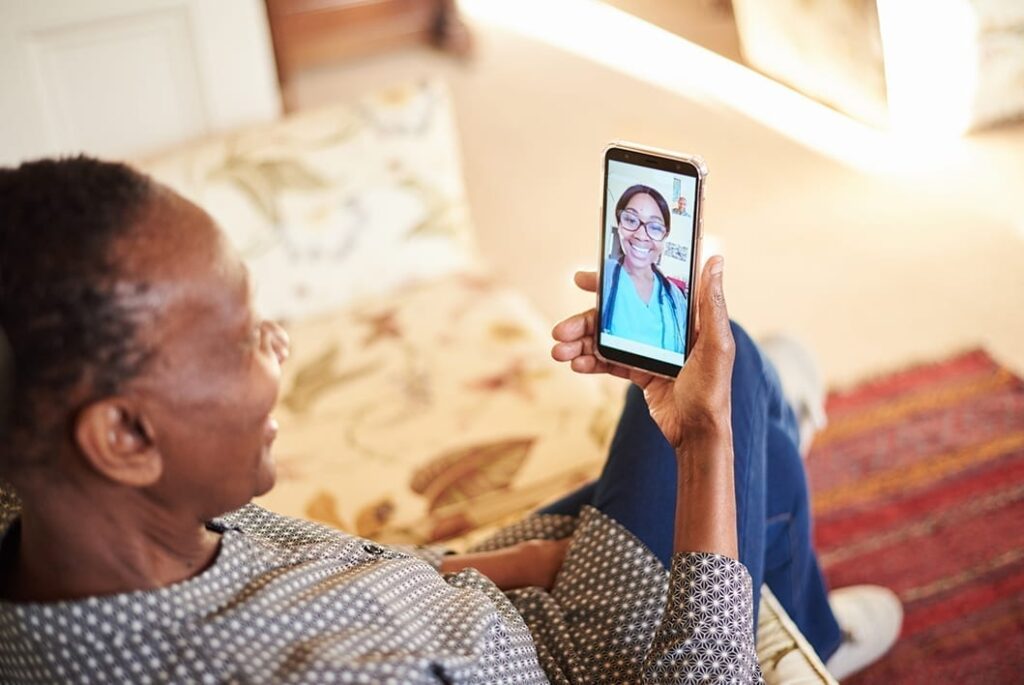
At Medecision, we understand the value of virtual care. But until we make the processes easy and accessible, we’re not going to change the ability of all people to access healthcare equally and address healthcare disparities. And access is just the beginning.
By Medecision
There are serious problems with how we seek and provide healthcare in America. At every level, the system is extremely burdensome, with a lot of friction. Healthcare entry is an event, and one’s ability to address that event is dependent on multiple factors that some of us take for granted. As a result, access to care is far from equal—and, unfortunately, people’s lives are at stake.
Nancy Krieger, a professor of social epidemiology at the Harvard T.H. Chan School of Public Health, said COVID-19 is “revealing patterns that have long been known in public health.” In an interview last year with The New Yorker, she pointed out gaps including differences in the ability of certain populations to work from home, types of jobs worked, housing situations, access to high-quality medical care, and the likelihood of preexisting medical conditions. There are also healthcare disparities among regions and between urban and rural populations.
Healthcare that is easy to access on demand would go a long way toward eliminating healthcare disparities. Fortunately, virtual care can help address these disparities, moving us toward equal access for all communities. As we’ve previously noted, 2021 rule changes from the Centers for Medicare & Medicaid Services (CMS) aim to make it easier for high-risk populations and others to receive essential medical care virtually. But we still have far to go.
Access to Virtual Care Is Just the Beginning
For all people to be able to access care equally, we must make the processes easy and accessible. And access is only the beginning. Effective care must also include understanding and follow-up, and there are barriers to those as well. A 30-second telehealth visit is little help to someone who doesn’t understand healthcare or speak the same language as the provider. Beyond making healthcare more accessible, we must ensure that it is properly used, in a way that is understood.
“Done right, virtual care can help make healthcare more accessible and more effective,” said Dr. Terri Steinberg, Medecision’s Chief Medical Officer and Group Senior Vice President of Analytics and Population Health. “Done wrong, it can actually make healthcare more accessible but less useful.”
These elements are essential to the equation:
- Family. Research has shown that the most important thing you can bring to a hospital visit or doctor visit is a family member, somebody to listen with you and pick up what you might miss. Right now, virtual care is not doing a very good job of making sure this happens.
- Location. Not all communities seek healthcare at the same rate. Whether we’re talking about vaccinations, blood pressure monitoring or anything else, we have to take healthcare where the people are. Targeted outreach is a must. If you want to reach senior citizens, go to the senior centers. If your goal is to provide health services for people whose first language is not English, go to the community centers that attract those populations. The homeless population, by and large, does not come in for doctor’s office visits, but you can send community-based teams to the right location with a self-contained virtual unit to treat them
- Timeliness. On-demand deployment is an integral part of the notion of virtual care. This outreach generates information that triggers a phone call from someone who initiates a video visit. That video visit determines a patient may need, for example, a blood pressure monitor or a temperature or pulse oximeter. And that determination leads to somebody showing up at the patient’s location with the devices necessary to do remote diagnostic care.
- Infrastructure. Virtual care is evolving, not static. The key is to create the infrastructure that will allow virtual care to keep up with—or, even better, stay ahead of—our evolving needs. If someone needs a diagnosis, send a medical assistant to their location with a diagnostic kit. If one’s vital signs need to be measured, send the individual to a kiosk like the ones opening in pharmacies and big-box stores around town instead of to the emergency department. We need human beings in the middle of virtual care so we can have systems of care. This requires care managers with interoperable access to plug into various virtual services and health management platforms, whichever business entity might be providing them.
Questioning Assumptions
The difficulties that many people face in obtaining healthcare services hit home for Dr. Steinberg recently when she and other family members were trying to schedule her mother’s first COVID-19 vaccination. The time, technological know-how and system navigation required to make the appointment impressed on her the challenges faced by those with fewer resources at their disposal.
A bus driver or factory worker, for example, might not have access to a phone during working hours to call and make an appointment. Someone who doesn’t speak English as his or her first language also faces hurdles.
Krieger discussed the assumptions and lack of holistic, integrated thinking that can hinder the development of effective solutions. Government directives that someone who feels sick should stay home from work disregard the fact that many people cannot afford to do that. Orders that sick children should be kept at home fail to recognize that childcare may not be available. Suggestions to contact one’s medical provider assume that everyone has a medical provider.
Technology and Communities
“Patients face three overlapping barriers to accessing telehealth: the absence of technology, digital literacy, and reliable internet coverage,” David Velasquez and Ateev Mehrotra wrote last May in a HealthAffairs Blog. “Together, these barriers comprise the digital divide, which disproportionately affects older people of color and those with low socioeconomic status.”
But “we can’t let a perceived need for perfection be the enemy of good,” Dr. Steinberg cautioned. “The last year has proved that we have the face-to-face technology to conduct secure virtual sessions, deploy diagnostic capabilities, and provide language and medical translation services. Systems of care can accommodate for individual deficiencies.”
Communities also have the power to exert a positive influence. Having trusted individuals take a stand about what’s important can help change perceptions. If 90% of the seniors at a senior center don’t know how to interact with the person on the screen, somebody who does might be willing to have a virtual appointment in public so everybody else begins to see the benefit. The concept of community health, which goes back nearly a half-century, entails building trust by having community leaders vouch for those who are working to provide healthcare to that community.
Healthcare and community organizations can increase virtual access by sponsoring programs. Whether it’s a doctor group, a hospital organization or a government agency, somebody has to provide the technology and programming—at the VFW, for example, or the Knights of Columbus or a Latin American club. Coordinated geographic coverage will blanket the community.
By looking beyond the perceived barriers and using the tools we have at our disposal, we can take major steps toward addressing this very serious issue that affects so many lives.
How can your organization connect the entire care ecosystem to improve equitable health and care of your members and patients? Visit AerialHealth.io to learn more and to contact us.



About The Author: Medecision
Fully delivering on the promise of data — and making the business of healthcare simpler and more successful — Medecision offers a whole new world of possibilities. The company's flagship offering, Aerial™, stands as the market's most extensible clinical data platform. It offers complete contextual awareness of members and automates next best actions — simple campaigns, complex care management, utilization approvals, and more — for optimal health outcomes.
Aerial is not only quick to deploy, it is easy to manage. The platform's effectiveness in reducing both medical and administrative costs, coupled with its role in improving the member and patient experience, has made it the preferred choice for health plans and care delivery organizations. Presently, Aerial is instrumental in catering to over 10% of the U.S. population, marking a significant milestone in advancing healthcare efficiency and effectiveness.
More posts by Medecision